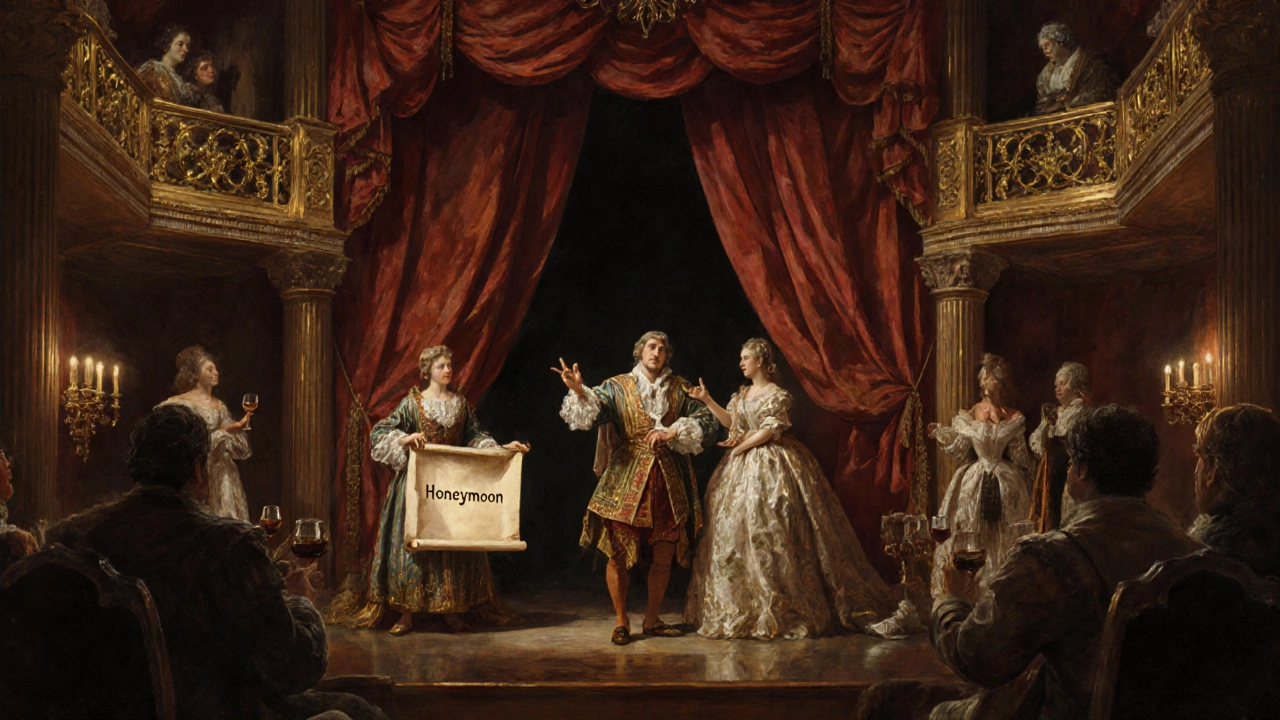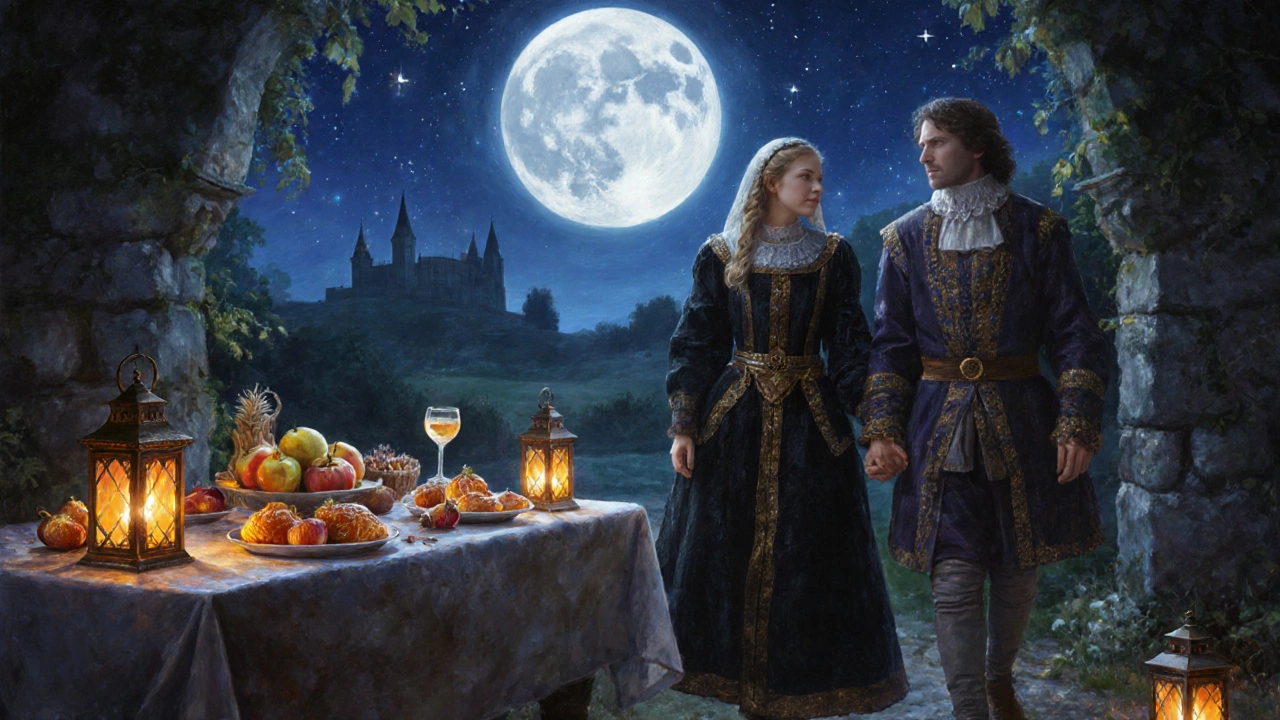Honeymoon Sweetness Calculator
How Sweet Is Your Honeymoon?
Discover how well your destination matches the historical meaning of 'honeymoon' - a sweet month of celebration after marriage.
Destination Features
Your Honeymoon Sweetness Score
Ever wondered why newlyweds head off on a honeymoon and why the trip carries that sweet‑sounding name? It’s not just a marketing gimmick - the word has roots in ancient languages, medieval customs, and a few literary twists. This guide unpacks the full story, from Old English whispers to modern romance trends, and shows how the name still shapes the way couples choose destinations.
What the word actually means
Honeymoon is a period of travel or leisure taken by a couple shortly after their wedding, traditionally meant for bonding and celebration. The term splits into two clear parts: “honey” and “moon”. “Honey” evokes sweetness, while “moon” hints at a fleeting, magical phase. Put together, they suggest a short, sweet interlude before everyday life settles in.
Old English and Middle English clues
The earliest linguistic breadcrumbs appear in Old English where “hony” meant sweet and “mona” referred to the month. By the time the language evolved into Middle English, writers used the phrase “honeymoon” to describe a brief, blissful period after marriage.
Medieval matrimonial customs that fed the idea
In medieval Europe, it was common for a couple’s first month of marriage to be celebrated with extra feasting, honey‑laden desserts, and moonlit walks. These customs reinforced the notion of a “sweet month”. Some scholars link the practice to Matrimonial customs in the British Isles, where honey was a symbol of fertility and the moon a protector of lovers.
Literary boost: John Drydry and the French phrase
Fast‑forward to the 17th century: poet John Dryden used “honeymoon” in a 1671 play, cementing it in English literature. At the same time, French aristocrats were already calling the early married bliss “lune de miel”. The cross‑cultural echo helped the term spread across Europe.

Historical practices that look like a honeymoon
Beyond language, actual customs bolstered the idea. In the Roman Empire, newlyweds would spend a month in a rural villa, often near a vineyard, sipping honey‑flavored wine. Viking traditions also mentioned a “honey‑month” during which the bride’s family would give sweet treats to the groom’s clan. While not a vacation in the modern sense, these rituals framed the early married period as a special, sweet time.
How the term shifted to travel in the 19th century
By the Victorian era, the concept of a dedicated post‑wedding trip began to appear in travel brochures. The rise of railways made it easy for couples to escape to seaside resorts or Alpine retreats for a “honeymoon”. Travel writers started using the word to describe these get‑aways, and the link between the name and the act of traveling solidified.
Modern honeymoon trends and why the name still matters
Today, the honeymoon origin story is more than a neat anecdote - it influences how couples pick locations. A name that promises romance and sweetness nudges travelers toward places with honey‑related products (like New Zealand’s Manuka honey farms) or moonlit backdrops (think Maldives overwater bungalows). The legacy of the term keeps the industry focused on intimate, memorable experiences.

Comparing the main theories
| Theory | Origin Period | Key Evidence |
|---|---|---|
| Etymology Theory | Old English to Middle English (9th‑15th c.) | Lexical records of “hony” + “mona” meaning sweet month |
| Cultural Practice Theory | Roman & Viking eras (0‑1000 c.) | Historical accounts of month‑long post‑marriage celebrations |
| Literary Theory | 17th c. onward | Use by Dryden, French “lune de miel”, 19th‑century travel ads |
Fun facts you probably didn’t know
- In some cultures, the first month is called a “honey moon” because couples are expected to avoid hard labor and focus on intimacy.
- The phrase “honeymoon” was once used in political satire to describe a brief period of peace after a treaty.
- Modern couples spend an average of 7‑10 days on their honeymoon, with beach destinations still topping the list.
- New Zealand’s honey‑themed lodges have seen a 22 % rise in bookings after the term’s origin story resurfaced in travel blogs.
Quick checklist for planning a meaningful honeymoon
- Pick a destination that offers both sweetness (local honey, desserts) and romance (moonlit settings).
- Reserve a stay at least three months early - popular spots fill fast.
- Budget for a “sweet month” vibe: think sunrise breakfasts with honey‑drizzled fruit.
- Consider a cultural activity that echoes historic traditions, like a wine tasting in a Roman‑style villa.
- Leave room for spontaneity; the original honeymoon was about a short, carefree period.
Why the name still drives the industry
Travel companies love the word because it instantly conveys romance, exclusivity, and a promise of something special. Marketing copy often blends the historical “sweet month” theme with modern luxury, turning a simple stay into an experience framed around the original narrative.
What is the literal meaning of ‘honeymoon’?
Literally it combines “honey” (sweetness) and “moon” (a brief, magical phase), describing the early, sweet period after marriage.
When did the term first appear in English?
The phrase shows up in Middle English writings from the 14th century, but its roots stretch back to Old English.
Did ancient Romans have a honeymoon?
Romans didn’t call it a honeymoon, but they did enjoy a month‑long celebration with honey‑flavored wine, which likely inspired later customs.
Why do modern couples still travel for a honeymoon?
Travel provides a break from daily routines, builds shared memories, and taps into the historic idea of a sweet, dedicated month together.
Can a honeymoon be any length?
Yes. While the original meaning implied a month, today couples choose anything from a weekend getaway to a three‑month adventure.
